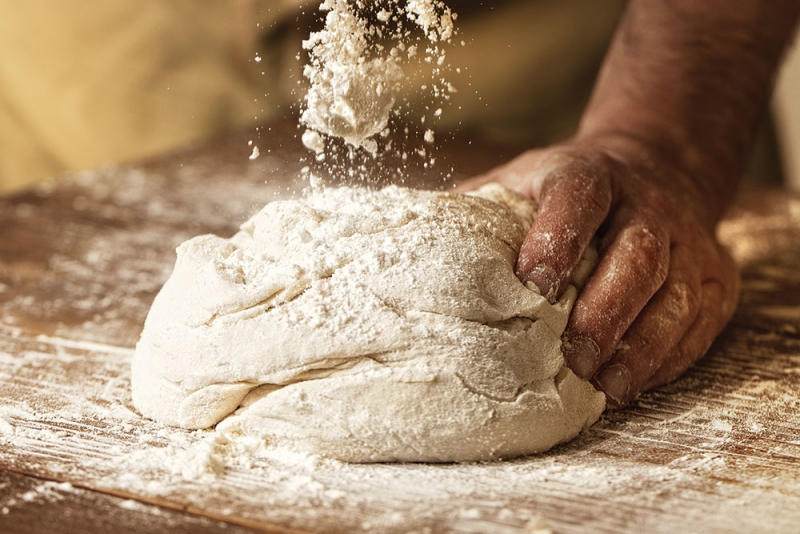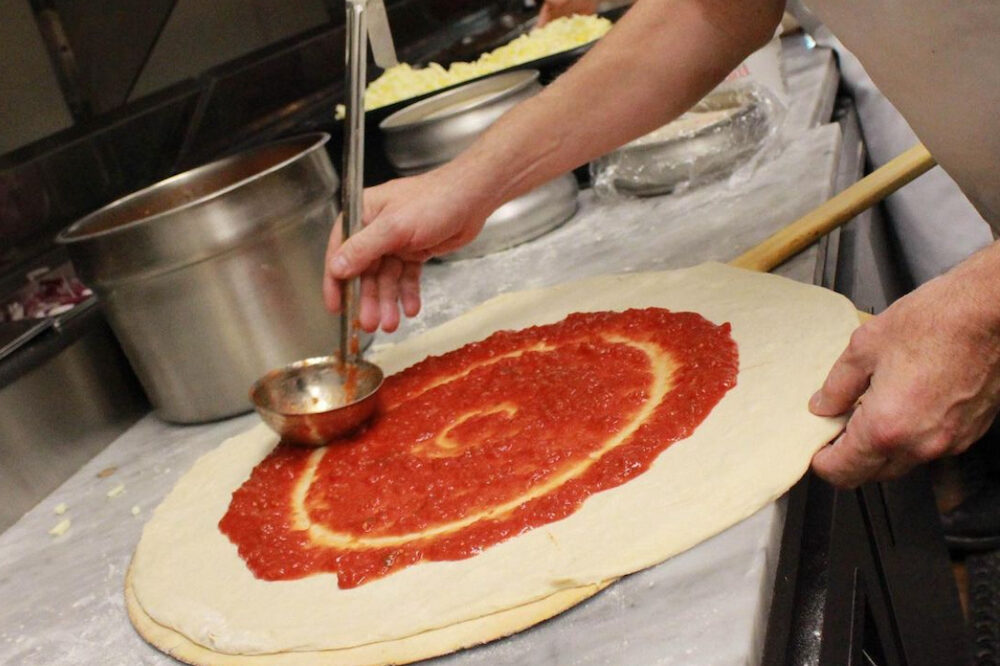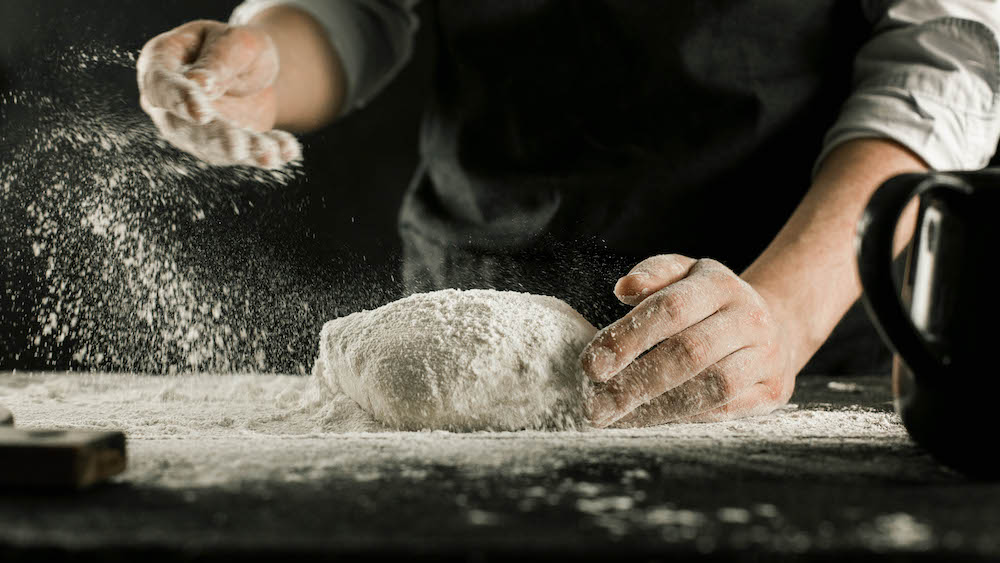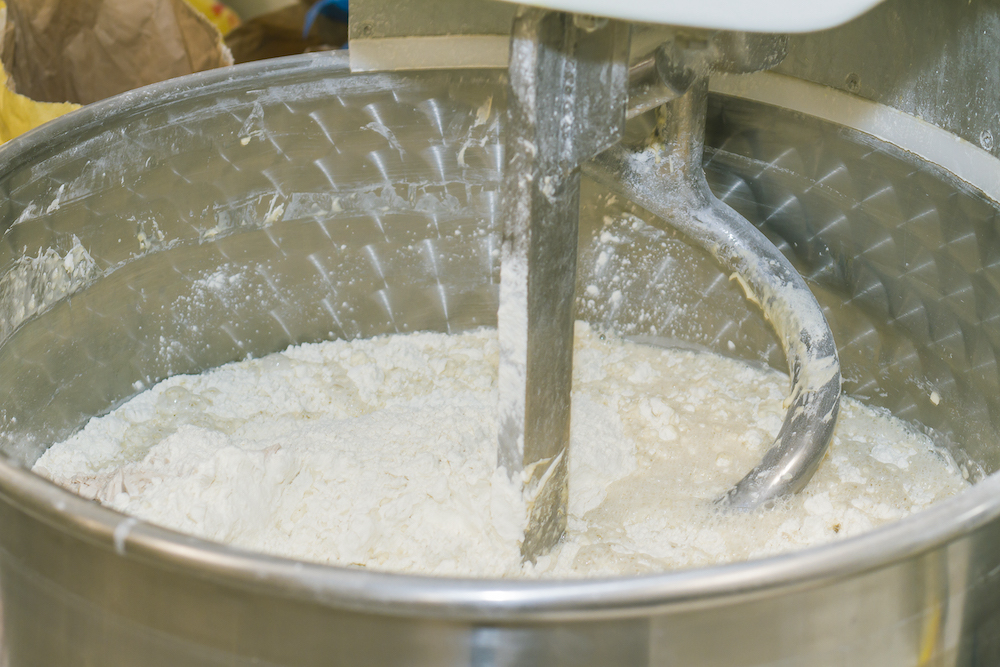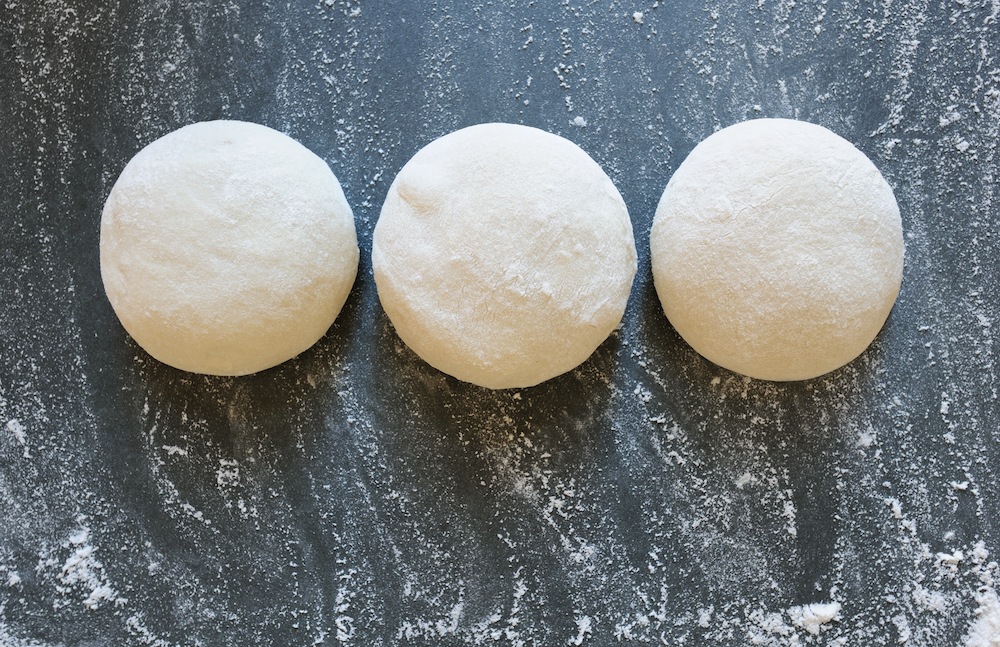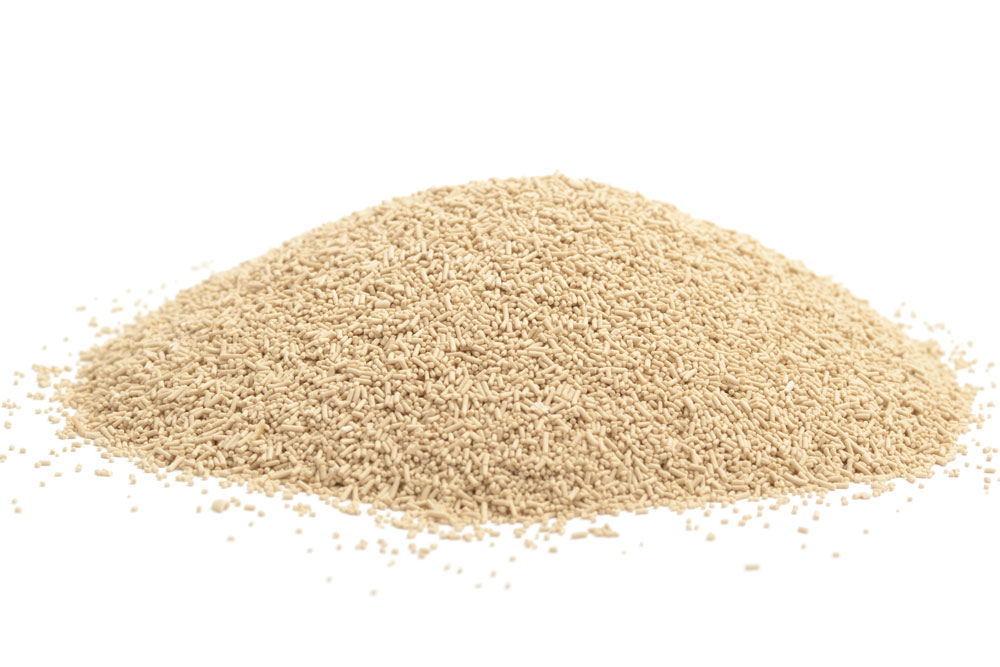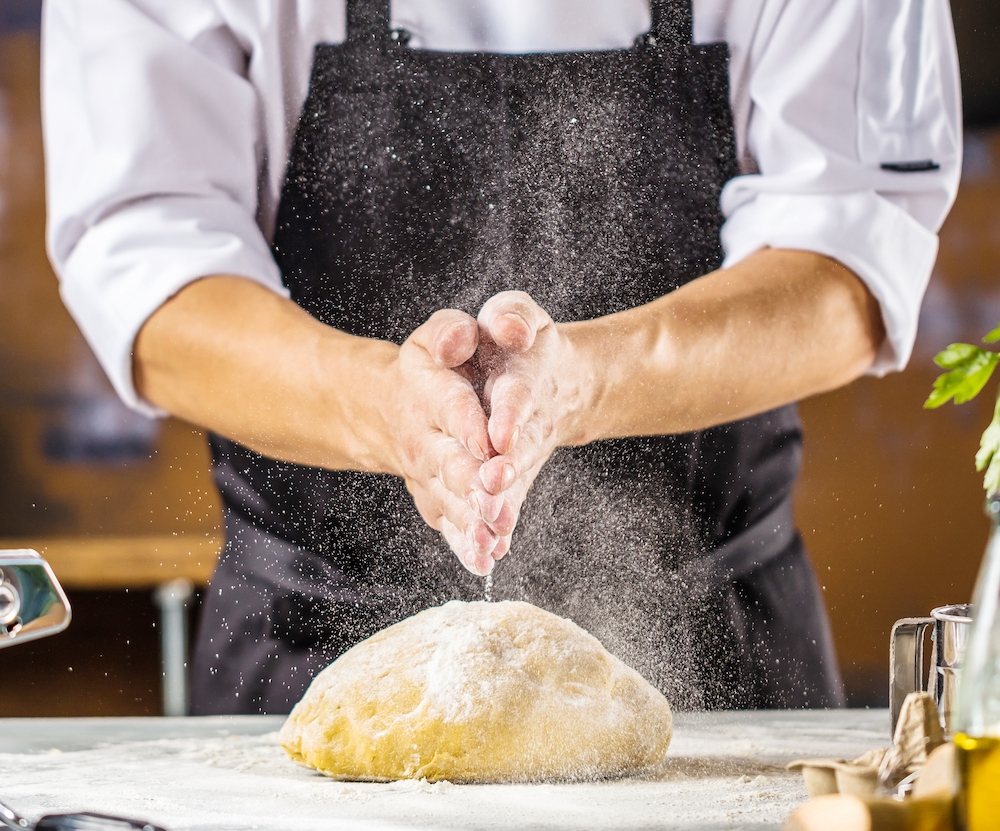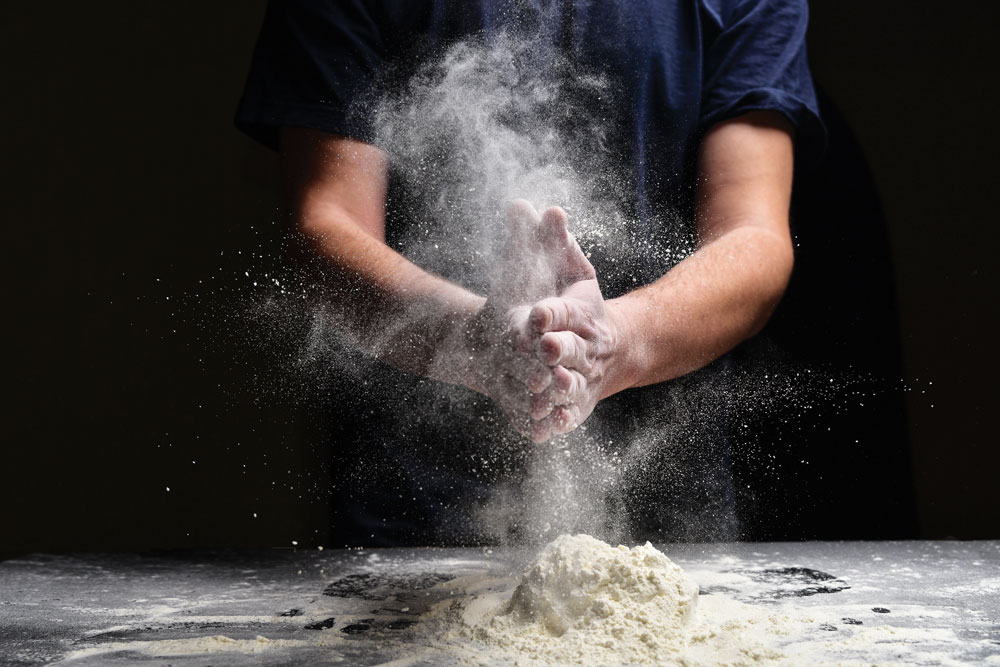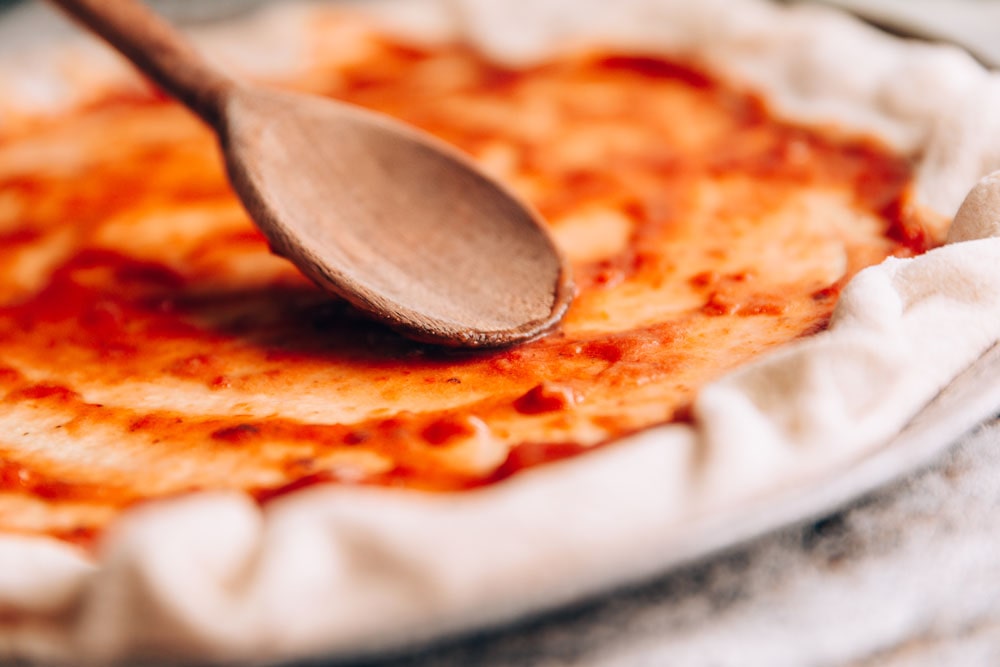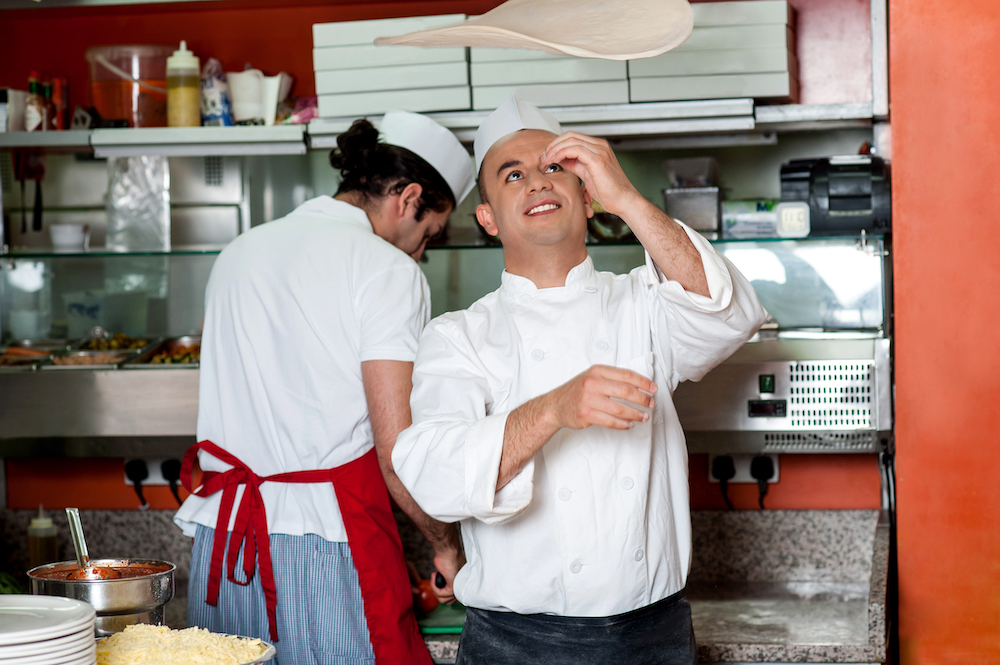Q: What’s the best way to add yeast during the dough mixing process?
A: Lately I’ve been getting a lot of questions about the basics of dough production. In the coming months, I plan to address many of these questions, one at a time, in this space. Yeast is an essential but sometimes misunderstood ingredient, so let’s start here.
The type of yeast that you’re using for your dough mix makes a difference. Compressed or fresh yeast can be crumbled onto the flour—it does not need to be suspended in the water. Instant dry yeast (IDY) is best added without prehydrating. To do this, just add it in dry form directly to the flour in the mixing bowl.
Active dry yeast (ADY), on the other hand, needs to be prehydrated first. Simply place the ADY into a small quantity of warm water (100°F), stir the liquid to create suspension, and allow it to hydrate until the slurry begins to develop bubbles on the surface. The hydrated yeast suspension can then be added to the dough water in the mixing bowl, or it can be poured onto the flour in the mixing bowl.
If you use a high-speed mixer—such as a vertical cutter mixer—the process will be a little different. Due to the very short mixing time, I recommend that you make a suspension of the yeast, regardless of the type of yeast being used. The compressed yeast should be put into the dough water and stirred until the yeast is completely suspended in the water. ADY will already be suspended, so there is no need to do anything different with it. The IDY will need to be hydrated. To do this, place the IDY into a small quantity of warm water (95°F) and stir to suspend, then set aside to hydrate/activate. Once you see bubbles beginning to form on the surface of the yeast suspension, it can be added to the mixing bowl in the same manner as ADY.



